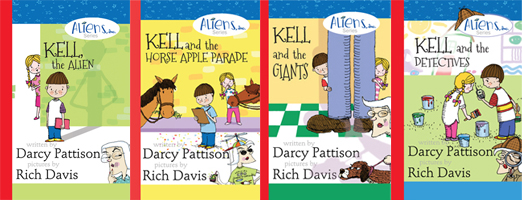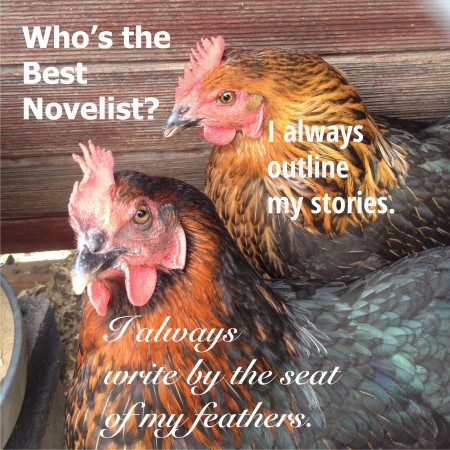Try Book 1 for Free

Last Friday, I wrote 4000 new words on my WIP novel. That’s a great day for me. But it was only possible because Thursday was a planning day.
When I work with students and teachers, I encourage lots of prewriting. My book, Writing for the Common Core, is essentially a book of prewriting activities. Here’s the thing: as professional writers, we know that our best writing comes with revision. That’s what students need to do, also: revise. However, that often devolves into merely copying a piece and cleaning up handwriting, especially in the lower grades. True revision, a re-envisioning of how to word something or the content to include/exclude, is hard to achieve in a 50-minute class.
Instead, I ask teachers to provide multiple prewriting activities. By giving students a rich and varied prewriting experience, they come to the first draft more likely to produce something worthwhile.
That’s what I did last Thursday, lots of prewriting.

Setting. One important thing for me was to locate my story on the slopes of Mt. Rainier. I used Google Earth to track the roads where my characters would be traveling. Using the program’s tools, I measured distances as the crow flies and distances along roads, so I knew how long each drive (and potentially chase scene) would take. I switched to the aerial view to look at the landscape–mostly wooded with some open areas.
Sensory Details. Once I knew where this section of the story would happen, I concentrated on the sensory details. What would they see, hear, touch, taste and feel? What would the day’s weather be like? Rainy, snowy, sunny, windy? Along with that, I thought about the mood of the events. Would the characters be frantic, excited, hopeful, angry, or bored?
Scenes. I also took time to sketch out the structure of a couple scenes. Scenes need a beginning, middle, end; add in conflict and a pivot or turning point; stir with some great emotional development. By planning ahead, I knew the general outline of what would happen.
Flexibility. With all the planning, though, I approached the writing with flexibility and let the moment carry the story forward. I “mostly” knew what I would write, but it always surprises me how much it changes and develops as I write. It’s never exactly what I planned; it’s usually better.
I’m not really an outliner; but I don’t write by the seat of my pants either. Instead, I need this half-way place, where I do rich prewriting activities and halfway plan, and then see where it all takes me. HOW you say something is everything. It’s not just what the story is or how well you plot. For me, the important thing is how you say it. What word choices do you make and why? What sentence structures and why? What pacing and why? The true writing happens when I write. But I love the prewriting because it enables me to get 4000 words done in a single day. Well, really, that was two days work: one to prewrite and one to write. Either way you count it, that was a couple great chapters to put behind me.

By Julie Daines
I'm not much of an outliner. I've tried it before, and it just doesn't seem to work for me. I wish it did because it seems like a much better way to write. But no. For me, I just can't.
So, I'm constantly asked, how do you work out the pacing of your novel?
Good question.
I am now going to divulge my secret and never-before-spoken-out-loud trick.
I listen to my gut.
Here's how it works:
I'm writing a scene. It's going great. The dialogue is fun, the action intense, and the conflict building. Then suddenly, I get this wrenching, panicky feeling right in the middle of my stomach. It says, "Oh my gosh, this is getting too long. You're dragging it out. Something new has to happen. You've got to move on." My blood races and my fingers shake unsteadily on the keyboard.
"MOVE ON!" it screams.
I listen. I wrap it up and move on. On to the next scene and the next plot point.
Is this a scientific method? No. Will you find it on Blake Snyder's Save the Cat beat list? No. But it works--for me.
Our guts--our writer's intuition--can often be our best friend if we take the time to listen. Feed back from critique partners, from beta readers, pacing, character names, character reactions, almost any part of our novel will speak to us.
Take a moment, consider carefully all sides, and listen to your gut. It is your friend.
When have--or when do--your writerly instincts kick in and help you?
Even pantsers need to do
some planning. Today I'm going to tell you about some apps that can help the mobile author plan a story.
Notes
There are many ways to plan a story. My favorite is to make notes that summarize key events in the story. The note apps I described in last week's article are perfect for that. But there are some other useful tools that you might find helpful, depending on your work style.
Outline
Many writers like to start with a detailed outline. I'm not one of them, but for this article, I looked for a good outlining app.
Outliner seems to be almost perfect for you Android-using planners. It enables you to make a detailed outline, and even create a task list based on the outline. If you're an outliner, you might try this app. I also see several outlining apps in the Apple App Store for a variety of prices. Let us know if one of these works for you.
Mindmap
I admit it, I like mindmaps. I've used them to organize projects for my day job. I've also used them to help me spawn ideas by creating word associations and following character traits through a map. If you want ideas for using mindmaps to create a novel, you might start with
this article.
A character mindmap in SimpleMind Free
There are several mindmapping tools you can try, but the one I've used on my tablet is called
SimpleMind for Android. SimpleMind is also free in the Apple App Store, so iOS mindmappers rejoice.
SimpleMind is easy to use, even on a small screen. It's easy to create nodes and move them around, and the mind maps are simple but attractive. I haven't tried syncing a map or saving to Dropbox. You're more likely to want to use this on your tablet than your phone because the bigger screen is nice, so syncing between devices might not matter much unless you have more than one tablet.
Whiteboard
The whiteboard is a perfect tool for story building. What can be better than a blank slate and colorful pens? You can free-associate thoughts and words, make mind maps, do whatever. When you have a blank white board, you have no limits.
I've been playing with a whiteboard app called SyncSpace Shared Whiteboard (
Android and
iOS). In addition to being a cool whiteboard with the features you'd expect and infinite zoom in an out, you can share your board across devices, including over the web, for collaborating. It's free for Android. The iPad version will set you back $9.99, but you get significant additional features.
There are tons of whiteboard apps for both Android and iOS. This is another app category where the best thing to do is try a few and decide what works for you. Go to your app store and search for "whiteboard." If you find a favorite, let us know.
Bulletin Board
I mentioned
Trello in the previous article in this series. Trello is essentially a bulletin board that you use to pin and organize cards. Like a real index card, a card has two sides that can contain anything you want it to, and you can organize your cards in a list, which is basically a bunch of cards pinned together in a column.
Think of the possibilities. You could have a card for each character and include whatever information you want, including a picture. Then, keep all of your character cards in the character list. Or, you could write a summary of each scene on its own card, then organize the scenes in order or into chapters. You could easily rearrange scenes, add new ones, or discard them into a discard list.
Because Trello is a Cloud application, all you have to do is set up an account and install the app, and your cards are available wherever you are, on any device.
Storyboard
Back in December, I wrote a detailed review of the Cardboard index card app and how it can be used for storyboarding. I'm happy to say this app has gotten even better since then, with better terminology and some interface changes. Best of all, the plug-in that included card styles for writers is no longer needed because those cards have been added to the main app. There are cards to help with common story elements, plot in traditional acts, or follow the journey of the hero.
If you like storyboarding with index cards, or if you like the storyboarding feature in programs like Scrivener,
Cardboard could become one of your go-to apps in your mobile office.
Next Step
Next week, I'll get down to the nitty-gritty with some suggestions for using your tablet to actually write your story. I'll discuss some full office suites, some minimalist text editors, and some ways to use the features of your mobile office to keep you focused on meeting your writing goals.
Part One: The Portable Office





